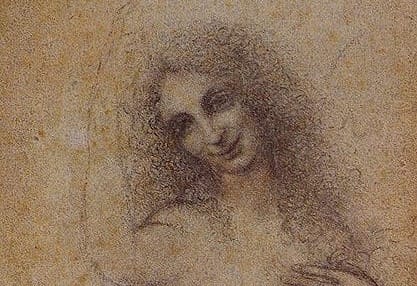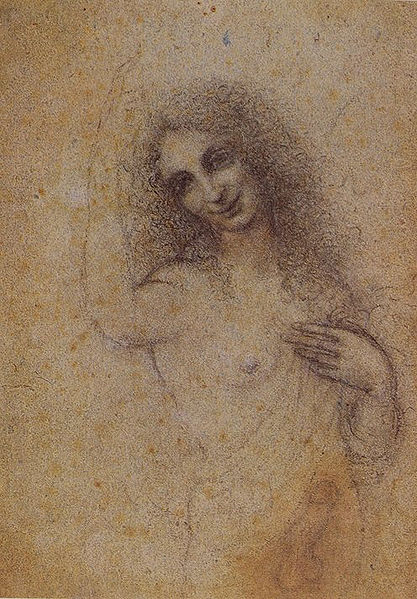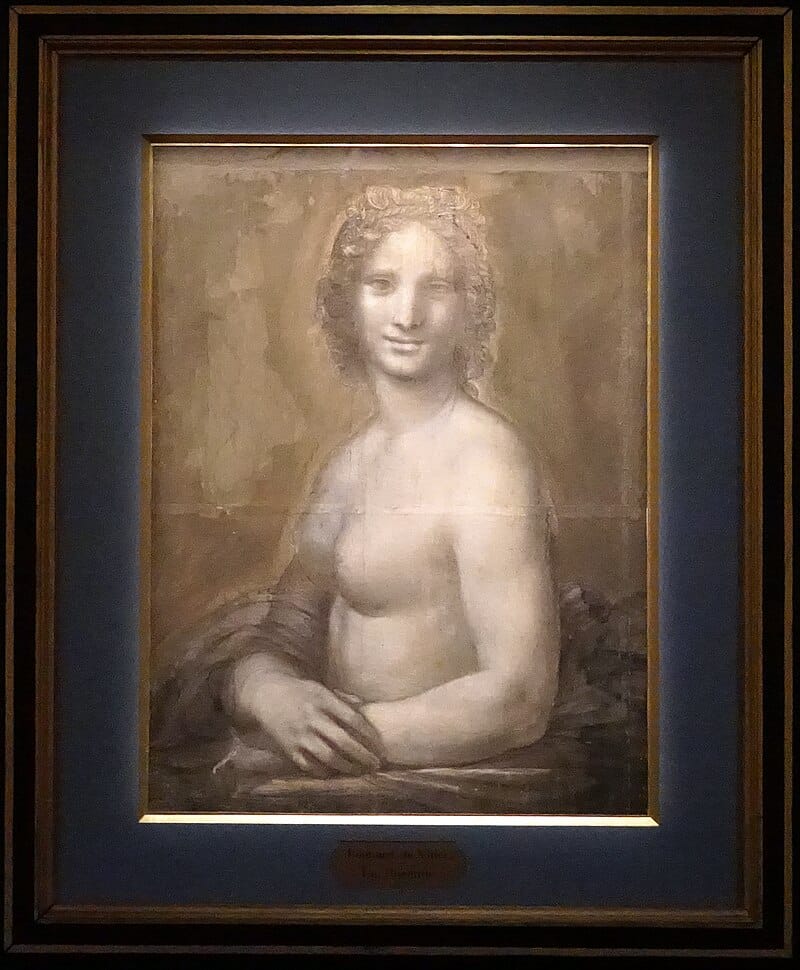'Angelo Incarnato'

Leonardo's Angel Incarnate (Angelo Incarnato) shows his assistant and lover Giacomo Salaì with a prominent erection pointing in the same direction as the pointing finger, toward God. In the mainstream media the image is always cropped above the nipple. The full image is below.
Incarnate Angel is a charcoal drawing that likely dates to around 1513-1515 although some say it is older. By the 19th century it was kept in the Royal Collection in Windsor Castle and popular theory says it was stolen. I believe it is now in private hands, so to speak.
Salaì’s full name was Gian Giacomo Caprotti and he was nicknamed Salaino and Salaì and Salaij (“little devil”). His erection has been disfigured by some high-minded individual.

Art critics' reaction to Angel Incarnate has been fascinating. Most of them call it an ugly and diabolical work. Christopher Knight of the LA Times, who knows about this sort of thing, calls it “ugly.” American psychoanalyst Laurie Wilson notes its "perverse ugliness" and English biographer Charles Nicholl calls it “troubling,” "with a disturbingly ambiguous face." These comments are, to say the least, inadvertently revealing.
In an otherwise wonderful biography, Nicholl writes “There's a challenge in such ugliness - an invitation to respond to the drawing as a kind of specialist transsexual pornography. The angel has become an unsavory-looking catamite fished up from the lower reaches of the Roman flesh-market," a line I make fun of in the main chapter. Nicholl discovers syphilis in that face, from which stare those "unpleasantly large, doll-like eyes." French psychoanalyst André Green gives it a religious spin and says there is “perhaps something satanic behind this angelic being.” Carlo Pedretti calls Salai “demoniacal.” Such hyperbole is amusing.
On the back, Leonardo has written the Greek words astrapen, bronten, ceraunobolian, literally lightning, storms, thunderbolts (metaphorically meaning things that cannot be depicted). Read into that what you will. But he's right: evidently his biographers can't deal with this figure...
There long has been controversy over the fact that in his will Leonardo left some extremely valuable paintings to Salaì, including Mona Lisa. Most have concluded they were originals, while others claim they were copies; perhaps because they had difficulty with the idea that Leonardo could have left them to a "servant."
Below is the charcoal sketch known as La Joconde nue and as Monna Vanna ("vain woman"?). Is it a witty parody of Mona Lisa circa 1515? Is it a self-portrait by Salaì? We don't know.

